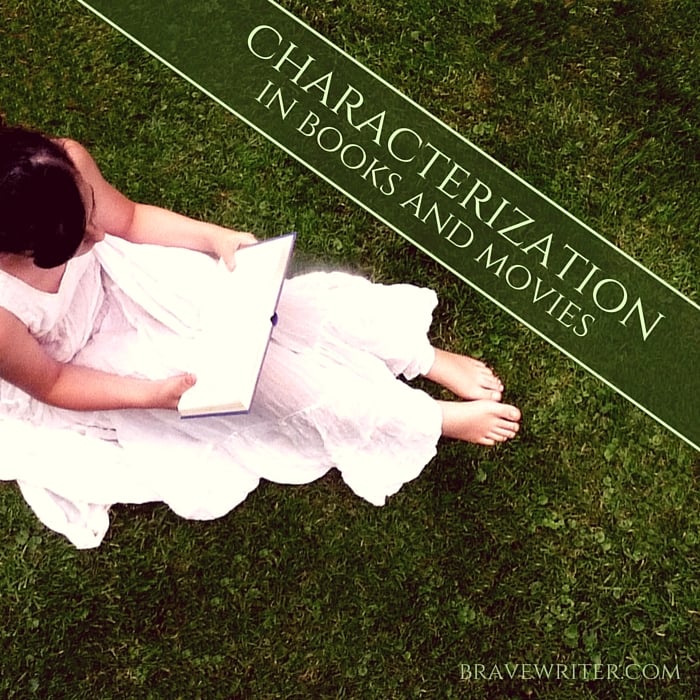Characterization in Books and Movies

In addition to plot conventions, movies and books share similarities in how they portray characterization. Naturally movies rely on visual cues such as costume, make-up, and hair style to define the period, personality and attention to personal hygiene of a character. In a novel, the author must describe enough of these details for the reader to create a corresponding image in the imagination.
In addition to these obvious categories of characterization, however, are the more subtle aspects of personality which are usually manifest in the following ways:
- physical idiosyncrasies like a limp or a lisp
- twitches
- wheezing
- playing with hair strands
- adjusting glasses
- slumped shoulders
- saucy gait
- pursed lips
- raised eyebrows
- military posture
- poor speech
…And so on.
When looking at an actor’s choices in a movie, then, it is important to consider what you see the character doing as much as what the character looks like or says. Movies require us to notice acting choices, such as:
- Does the character mumble or speak clearly?
- Does the character turn away from someone intimidating or does the character face that person squarely?
- How does the character relate to the other characters?
You can often detect differences in relationships through observing the changes in conversational style and posture between a single character and each unique relationship within the story.
In books, characterization is developed along similar lines, however, you also often have the benefit of internal processing (what the character thinks in addition to what the character does). This is most often the case for the protagonist (the primary character in the story). You may not have access to the minds of the other characters. The benefit of knowing what is in the mind of the character is that you will have layers of motivation to evaluate rather than merely drawing conclusions from behavior.
Shakespeare’s soliloquies serve a similar purpose in his plays. They are meant to reveal to the audience what the character is thinking that can’t be observed from the outside.
Another source of commentary on the character is often supplied by the author. Authors will give you clues about characterization based on how they title or describe the character. In The Red Badge of Courage, the main character, Henry, is referred to as “the youth” in every paragraph except dialog. It’s important to ask why because the author clearly intends to communicate something about Henry through that label.
In classic plots seen in movies and found in books, there are two primary characters to look for: the protagonist (usually the one we root for) and the antagonist (the one that makes us “boo”). The protagonist faces an obstacle that is the key to the plot. The antagonist wants to thwart the protagonist’s progress in achieving that goal. Sometimes the protagonist is supported by other characters in achieving the quest (as Frodo was in The Lord of the Rings). Sometimes the antagonist is not human but instead is a force in nature or a war or the gods (not all antagonists are human, either). And sometimes the primary antagonist is the self – a conflict occurring within the primary character.
Don’t feel you need to over-analyze characterization.
What is helpful to do is to ask questions of your kids as they read or view that helps them to notice what they might miss otherwise.
- Why do you think the protagonist has a limp? How does that hurt his chances of success?
- Who is the antagonist?
- Why does the antagonist oppose the protagonist?
- What does the costume say about that character?
- What can we learn about the character from the way he interacts with his parents, his friends and authorities?
…And so on.
Go forth and enjoy movies and books!



















[…] We watched the bits of Pirates of the Caribbean that the little ones could see (mostly the wheel fight) and Clare listened to the credit music and tried to transpose it to the keyboard and violin. Â Â Â We also did one of those “movies as literature” type discussions (I first read about this concept in Kathryn Stout’s column:Â Getting More out of Movies Part One and Part Two , but Julie Bogart also talks about it in her Bravewriter blog — anyway, this has always come naturally to our family because Kevin is such a movie aficionado and I am an English lit major). […]